In the outskirts of suburban areas and forest fringes, it is common to catch a glimpse of the elusive Silver-beaked Tanagers. They tend to appear briefly before retreating nervously back into the undergrowth.
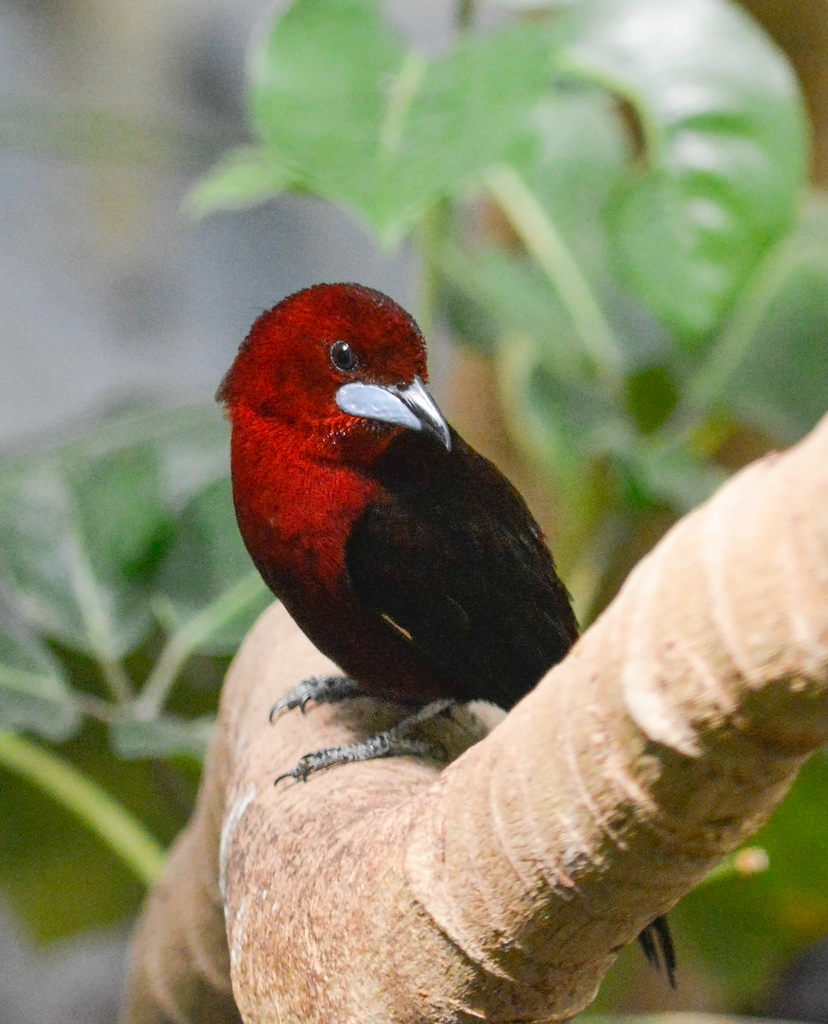
Meet the silver-beaked tanager, a charming bird species described by Charles Patrick Ewing. These winged creatures are not very big, measuring only 18 cm long and weighing around 25 grams. If you come across an adult male, you will be greeted with the sight of velvety crimson black feathers covering its body, along with a deep crimson throat and breast. While the upper beak is black, it’s the enlarged lower beak that catches your attention – shining brightly like a lighthouse in the dark! You can easily spot them during their mating season, when the bill points upwards as a display of affection.
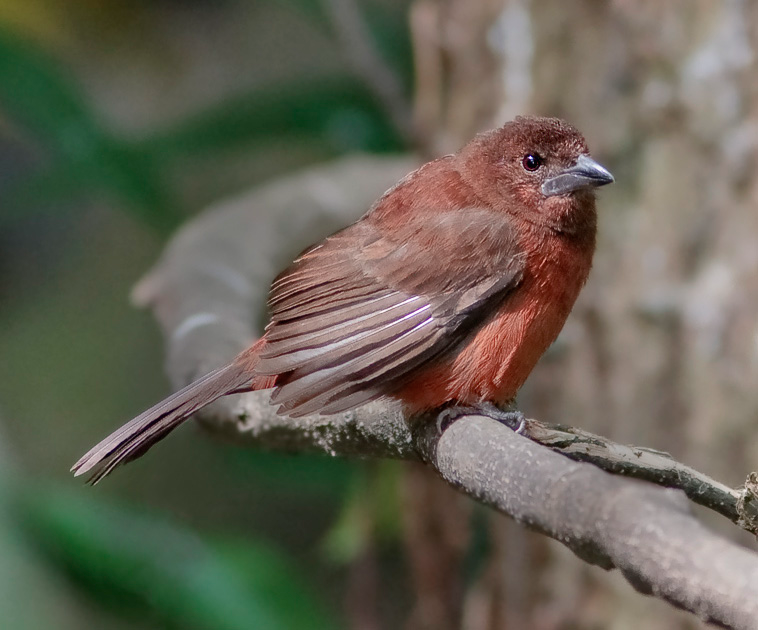
The photograph titled “Ramphocelus Carbo-20090124.jpg” taken by Doug Janson is licensed under CC BY-SA 3.0. The male bird has a vibrant coloration, while the female has a more subdued appearance with brownish upperparts, reddish-brown underparts, and a black bill. Different subspecies of this bird exhibit a range of variations in their plumage, mainly differing in the level of contrast between their upperparts, throat, and breast.
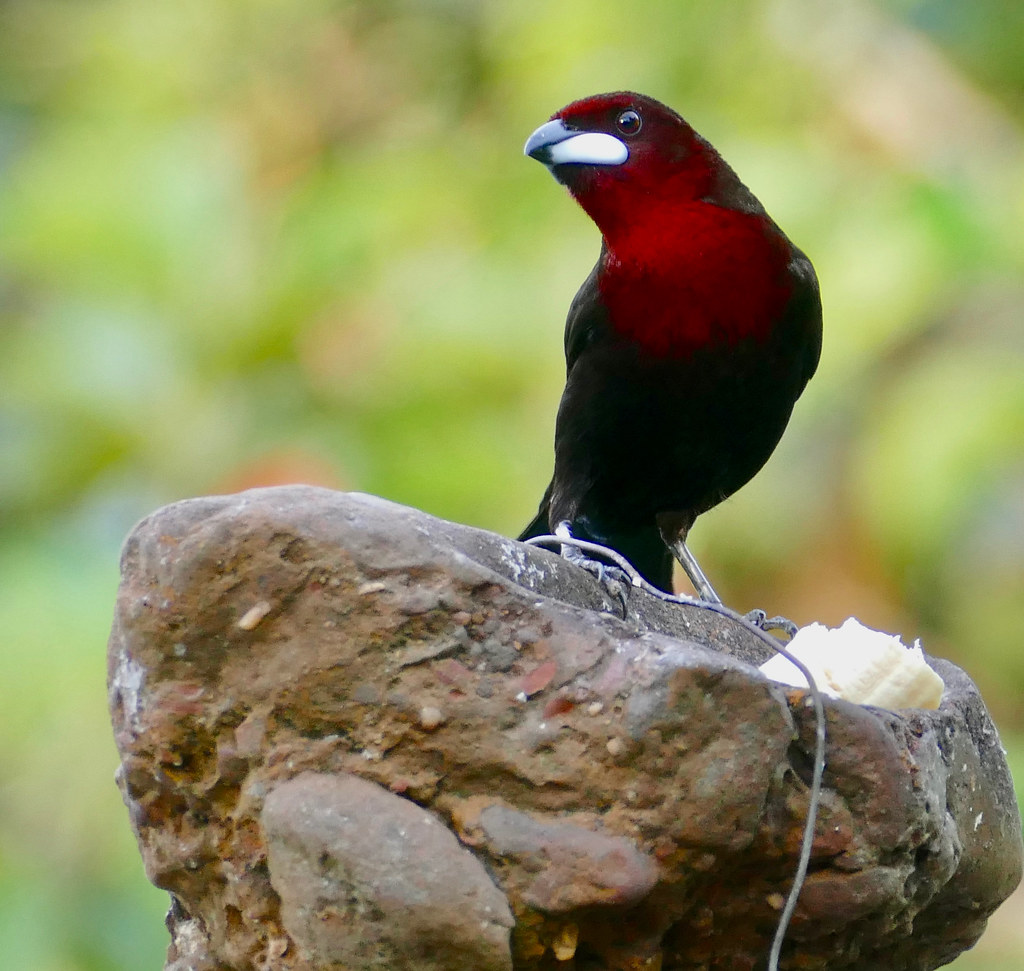
The male Silver-beaked Tanager, as captured in the photograph titled “Silver-beaked Tanager (Ramphocelus carbo) male eating banana …” by berniedup, is a native species of South America. Its habitat covers an extensive area from Eastern Colombia and Venezuela all the way down to Paraguay and Central Brazil. Interestingly, these birds can also be found on the southernmost island of the Caribbean, Trinidad.
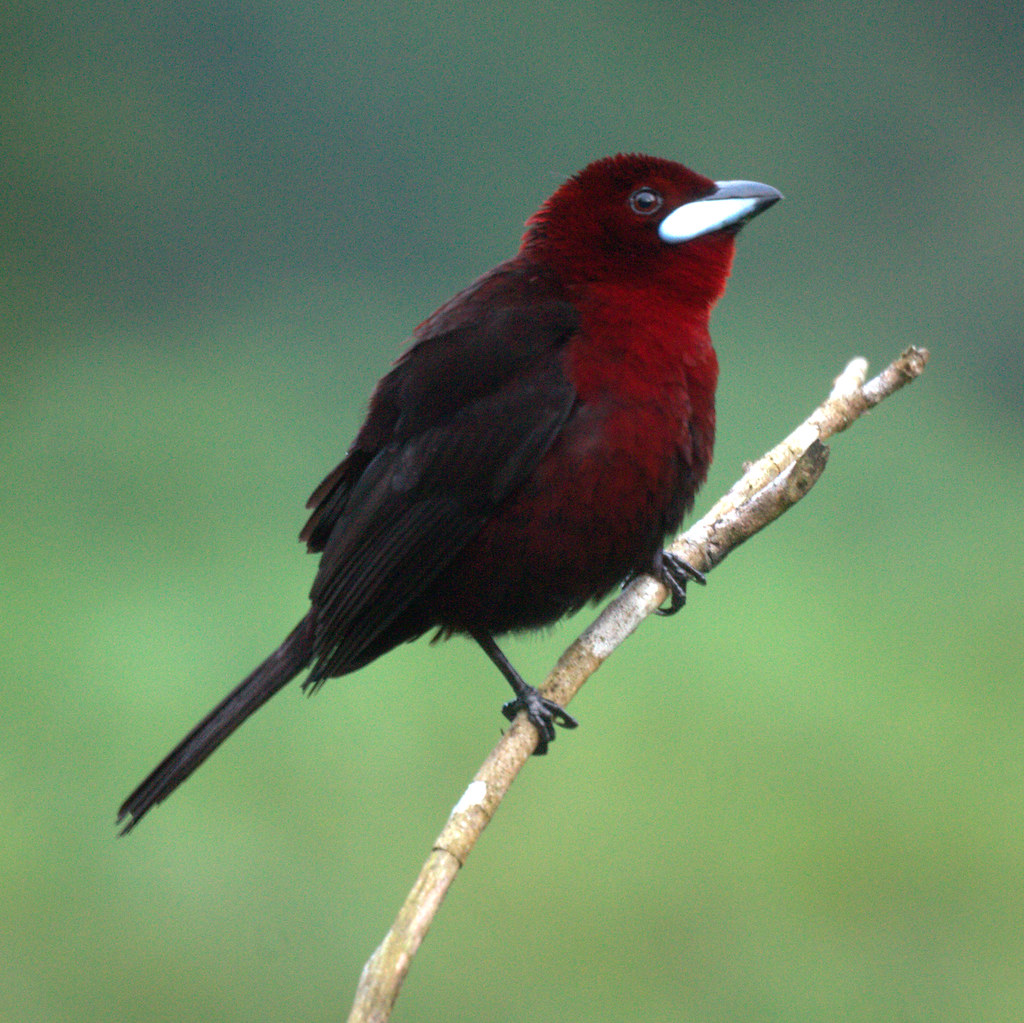
Mike’s Birds have licensed their photo of the Silver-beaked Tanager under the CC BY-SA 2.0 license. This bird is a common sight near forest edges, clearings, and gardens, and can sometimes be found near bodies of water. They are often seen in groups of six to ten individuals.
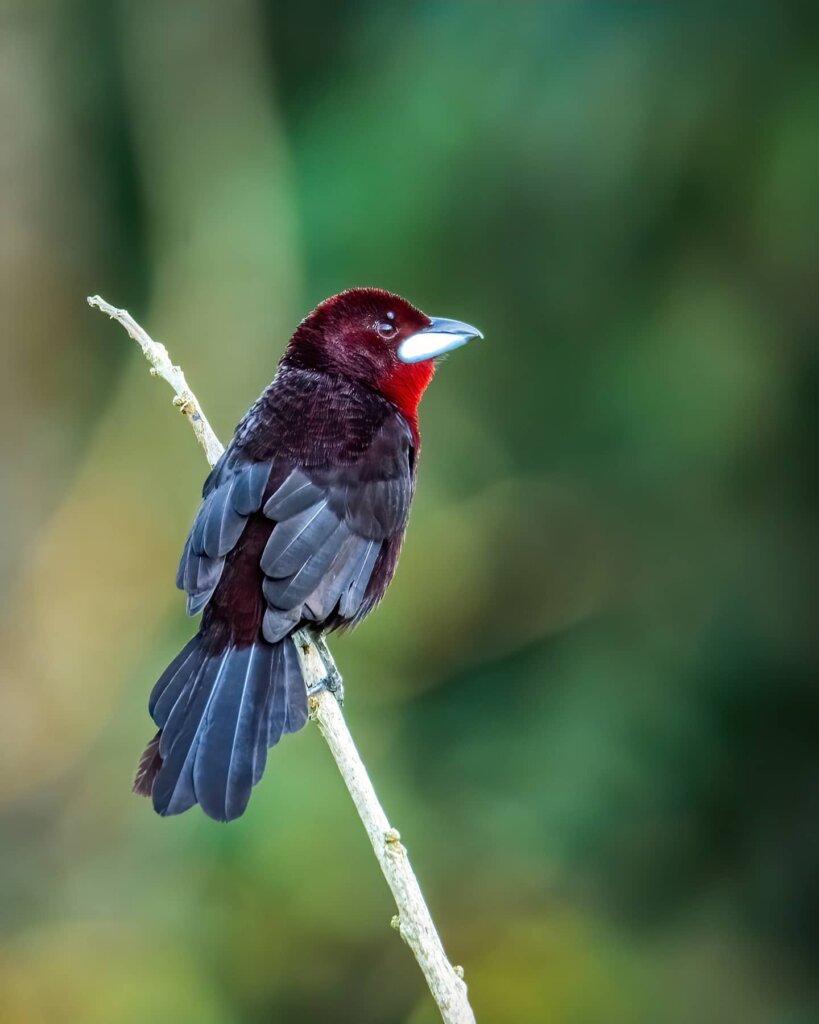
The “Silver-beaked Tanager” image from Mike’s Birds is available under the CC BY-SA 2.0 license. These birds typically eat insects and fruit, usually found at a height of about 3 meters from the ground or lower. On rare occasions, they may go up to 15 meters high.
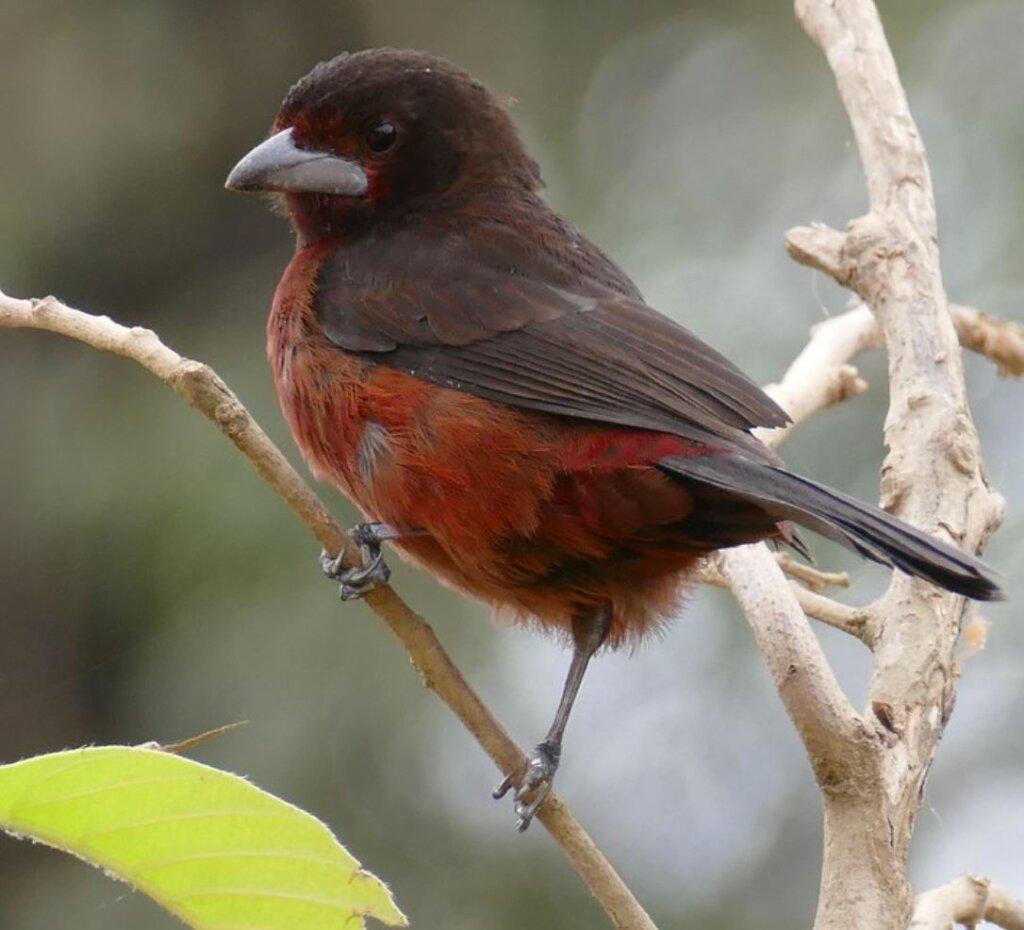
The female Silver-beaked Tanager (Ramphocelus carbo) constructs the nest by herself, creating an intricate basket shape. Once completed, she lays two eggs and incubates them for approximately 11 to 12 days until they hatch. After hatching, it takes another 11 to 12 days before the chicks fledge. This entire process is done solely by the female. The image used in this article is credited to berpiedup and has been licensed under CC BY-SA 2.0.
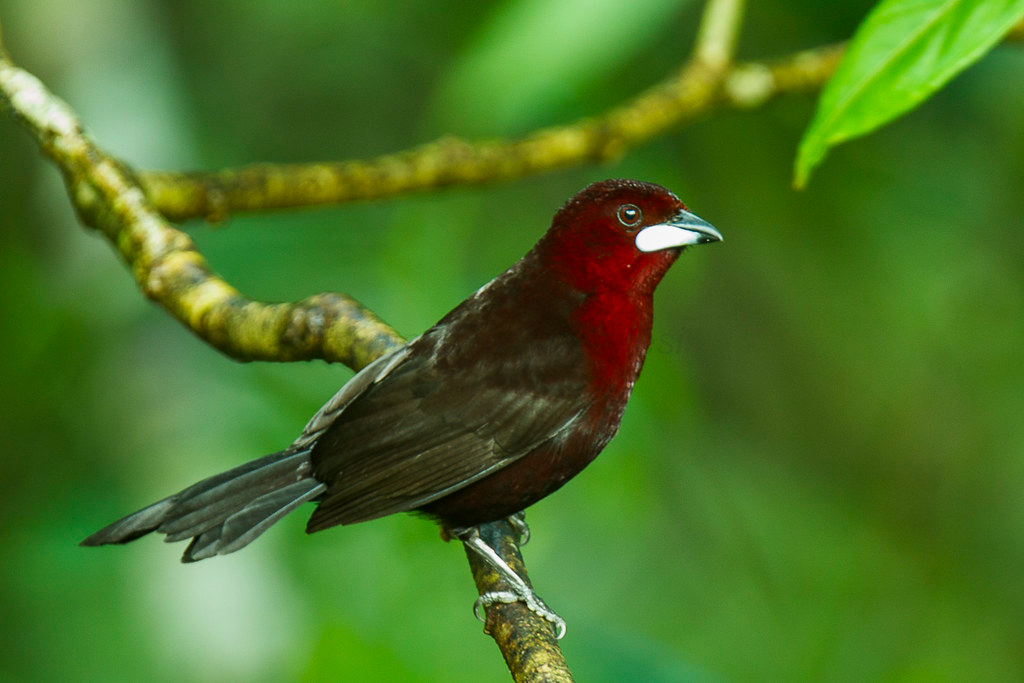
The photo titled “Silver-beaked Tanager – South Ecuador_S4E0520” uploaded by fveronesi1 is protected under the CC BY-SA 2.0 license. The silver-beaked tanager species has a vast habitat range and falls outside the vulnerable threshold defined by the IUCN’s range size criteria.
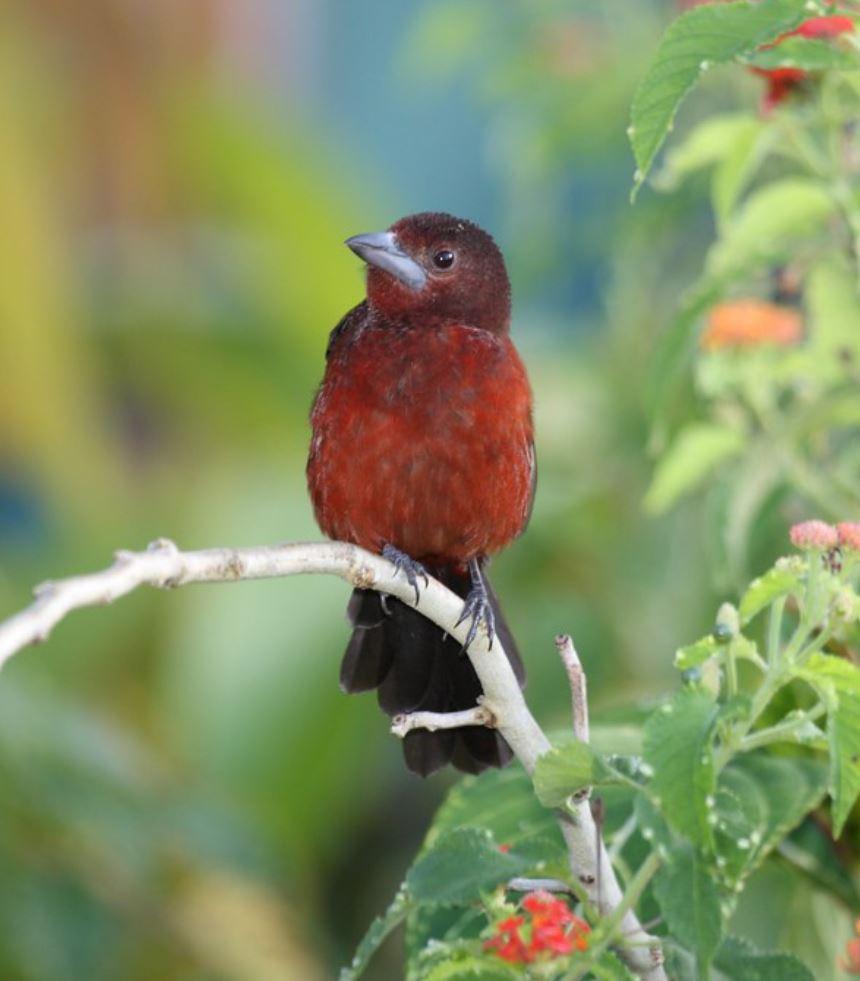
Check out this amazing female Silver-beaked Tanager captured in a photo by Dominic Sherony, licensed under CC BY-SA 2.0. If you want to see this beautiful bird in action, watch the video below!





